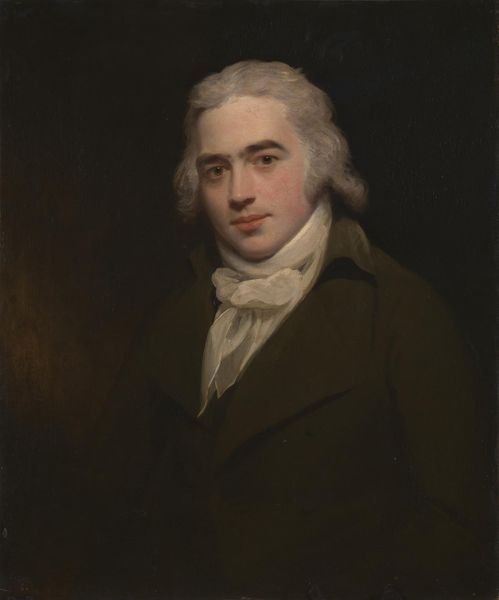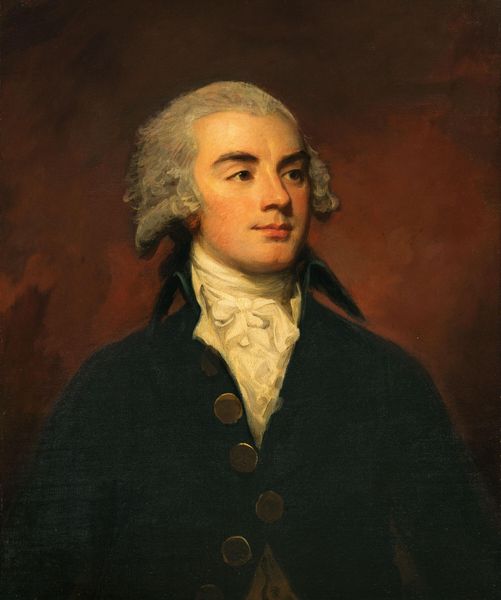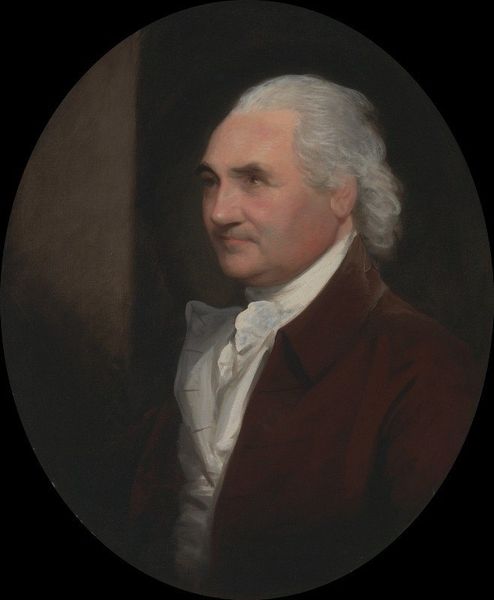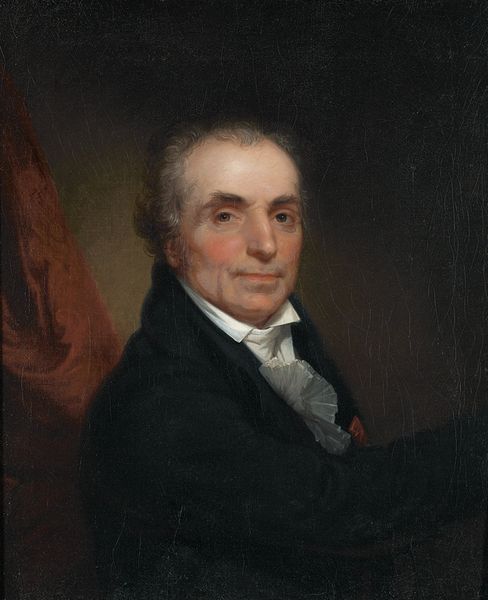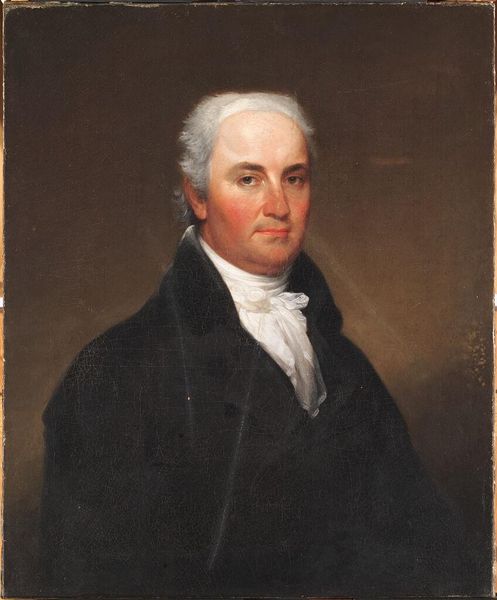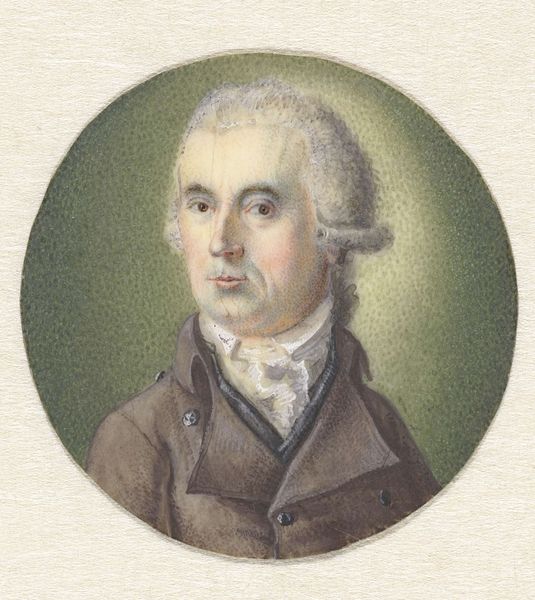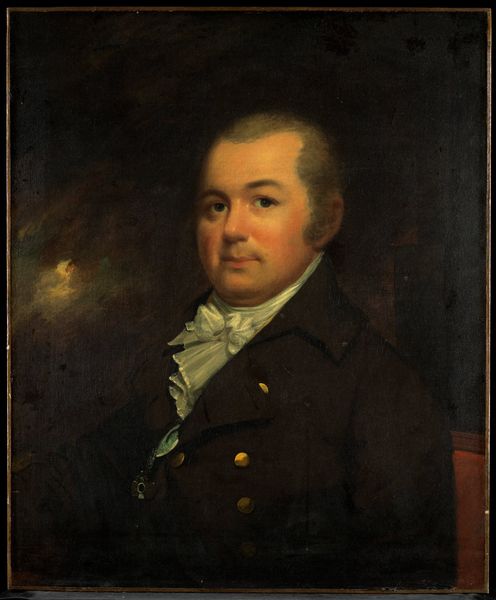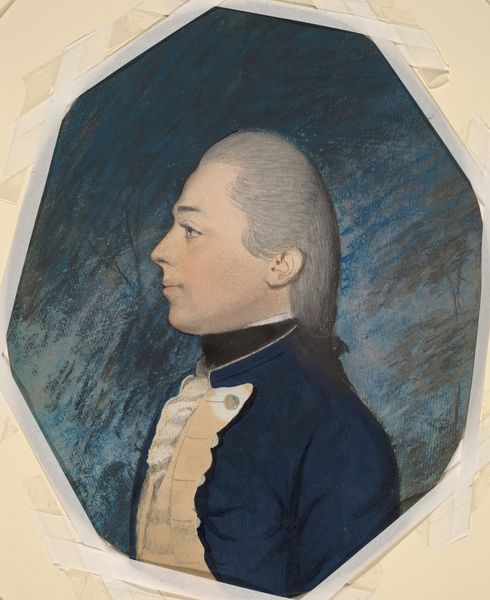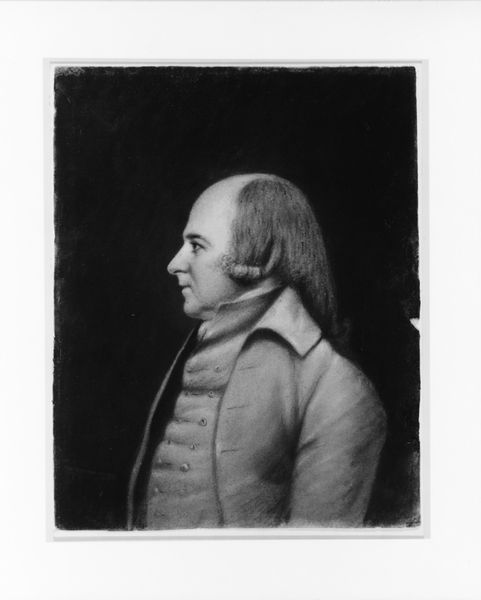
drawing
#
drawing
#
portrait reference
#
portrait head and shoulder
#
animal portrait
#
animal drawing portrait
#
portrait drawing
#
facial portrait
#
portrait art
#
fine art portrait
#
celebrity portrait
#
digital portrait
Dimensions: Overall: 24.2 x 18.9 cm (9 1/2 x 7 7/16 in.) framed: 31.1 x 26 x 4.1 cm (12 1/4 x 10 1/4 x 1 5/8 in.)
Copyright: National Gallery of Art: CC0 1.0
Curator: There's something undeniably stern about this portrait. A no-nonsense gaze, if I may. Editor: Indeed! Let's take a closer look at this artwork attributed to the Sharples Family, titled "John Bard," likely created between 1796 and 1801. It’s a drawing, rendered with such precision and clarity, isn't it? A direct gaze conveying a sense of authority. But who was John Bard, and what might this portrait be communicating about him and the society he inhabited? Curator: "Authority," yes, but also perhaps a weariness? The eyes hint at something deeper than simple stoicism. I wonder, was it intentional, or does my projection merely reflect contemporary disillusionment with authority figures? There's also an appealing rawness to this sketchlike execution. Not exactly photorealism but something much more psychologically intriguing. Editor: Absolutely, there is much here that lies beneath the surface! We must acknowledge how portraiture during this period played a pivotal role in constructing and reinforcing social hierarchies, power, and even definitions of masculinity. Bard's confident profile, accentuated by the powdered wig and formal attire, aligns him with an elite class that shaped early American society. Who had access to the means of commissioning a family portrait in this era? How does portraiture contribute to discussions about class, representation, and visibility? Curator: Yes! This powdered wig practically screams social status, although perhaps it whispers “old fashioned” already by that point. Is he clinging to outdated notions of power? And who gets to decide what is old fashioned, anyway? All of that is wrapped up in these lovely layers of pastel that the artist renders so skillfully. Editor: Precisely. Sharples family and similar artists immortalized their patrons within a very specific framework of class and expectation. Think, for example, how a direct gaze towards the painter – and us as future viewers - also conveyed one’s trustworthiness and upright moral character, and a subtle assertion of dominance through the control over one's own image. John Bard certainly wants to tell us that he has all of this. It demands us to consider art’s role in both perpetuating and questioning power dynamics throughout history. Curator: It also calls me back to our shared human vulnerability! That slightly sagging neck makes him seem vulnerable, despite his powerful position and serious composure. Editor: Agreed, this vulnerability in John Bard prompts crucial discussions. What power relations are being made visible – and what histories do we want to visualize as part of art history? Curator: I love this drawing all the more now, seeing the ways history and intimate portraiture converge within this single image. Thank you! Editor: Absolutely! Engaging with such nuanced portrayals not only enhances our appreciation of art history but can hopefully deepen critical insight into contemporary life.
Comments
No comments
Be the first to comment and join the conversation on the ultimate creative platform.

